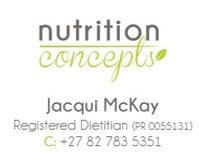Know your Heart Rate when training - Part 3
posted by TransformHERS on 11 Feb 13, 12:36
Categories: Fitness
The benefits don't stop once you finish your HIIT session. Following such intense exercise the body works hard to return to a state of homeostasis, which basically means cooling your body down, returning your heart rate to normal levels and reducing peripheral blood flow (the blood that has been pumped to the working muscles, which are normally in your legs). The scientific term for this is Excess Post-exercise Oxygen Consumption or EPOC, and it is a major contributor to the overall calorie expenditure experienced from HIIT.The higher the intensity and duration of your session, the longer it will take for your body to return to normal resting levels and, of course, the more calories you will burn. In fact, studies have shown that the effects of EPOC can still be experienced some 40 hours after really intense workouts. Due to this fact it is important to give yourself sufficient recovery time between HIIT sessions, as doing them 5-6 days a week can quickly lead to overtraining. Two to three session a week, incorporated into your weight training programme is ideal, with steady-state, lower intensity cardio used in-between as a way to actively recover and continue burning fat.
It is also advised that you have a good quality protein source, such as a well formulated supplement or whole food meal, combined with a source of low GI carbs directly after a session, to replenish glycogen stores and repair muscle tissue. Due to the intensity of the exercise there will be a large volume of blood pumped to your leg muscles, which means there is reduced blood flow to your digestive tract. This means that not everyone will be able to comfortably eat a whole food meal, so supplementation is often the best way to ensure you get those vital nutrients into your body after a heavy session. Replacing energy stores is essential is you want to have enough energy for the rest of the day and activities.
Additional benefits of using HIIT include the fact that it can reduce the amount of time you spend in the gym to achieve the best results. Combining hour-long low intensity cardio sessions with weight training is not always possible in today's busy life, but squeezing 20 minutes of HIIT into your session is much more realistic and achievable. This type of training is also said to spare muscle tissue better than long-duration, medium to low intensity steady-state cardio, so you can retain more of that tone and shape you are working so hard to achieve.
And lastly, the final element to the effectiveness of HIIT for weight and fat loss is, as always, proper nutrition. The aim is to create a calorie deficit from your combined efforts in the gym and in the kitchen. However, due to the nature of this type of training it is imperative that you supply your body with the right nutrients, in the right amounts and at the right time to ensure you can recover and continue training at the right intensity. It is also advised that you refrain from doing HIIT on an empty stomach. While 'bonk' training can be beneficial for fat loss it only works when you use low to medium intensity steady-state cardio training or medium intensity weight training. HIIT on an empty stomach can send your body spiralling into a catabolic state, which will do more harm than good.
H.I.I.T. guidelines:
• Use major muscle groups when doing HIIT
• Warm up and cool down properly
• Train for 15 to 20 minutes
• Slowly progress by increasing multiple variables (speed, duration or difficulty level)
• Train with accuracy by using a heart rate monitor
• Do not do HIIT on consecutive days (take 24 to 48 hours to recover)
• Only engage in HIIT if you already have a suitable level of conditioning and fitness
• Eat properly
• Do not engage in HIIT if you have any injuries. Check with your medical professional before starting any similar programme
Comments (0)
No comments posted
Add your comment
Sorry but unfortunetaly you need to be logged in to comment.




Success Stories
Read more success stories